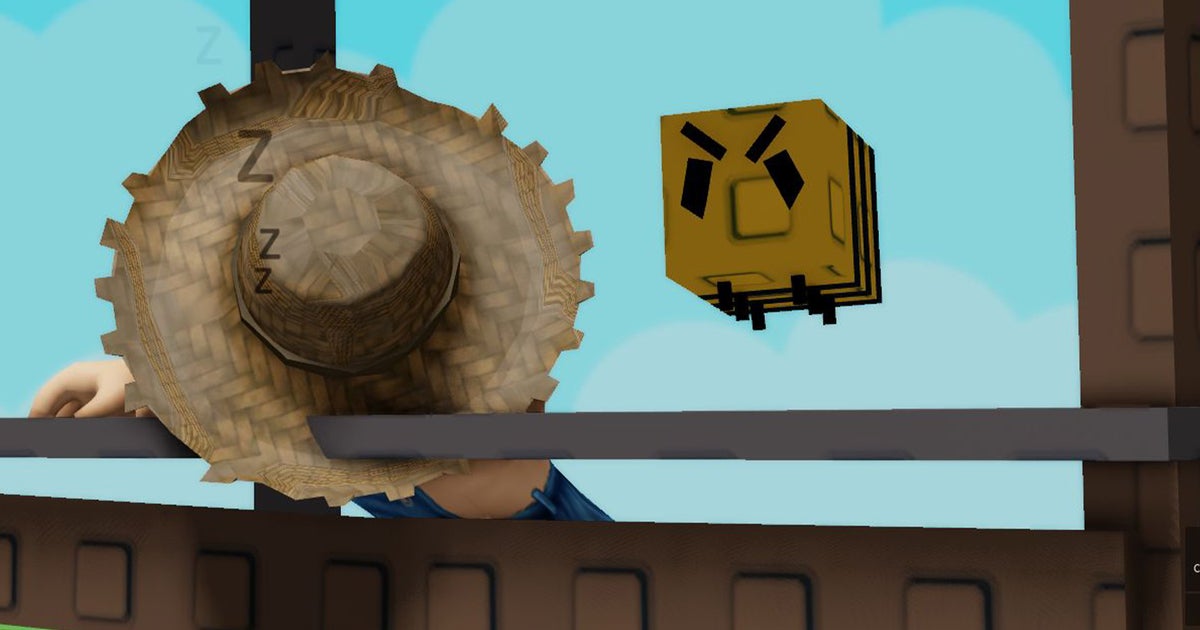| Site | Subscription Price | Supported Countries |
|---|---|---|
| FuboTV | 5-day free trial, $10–$90/month | USA, Canada, Spain |
| ESPN+ | $11.99/month | USA |
| Fanatiz | €6.99–€10.99/month | Worldwide |
| StreamLocator | 7-day free trial, no credit card required! $9.90/month | Worldwide |
With the Pacers and Thunder heading into a Game 4, Jalen Rose and Stan Van Gundy break down the key areas of focus for each team.
INDIANAPOLIS — Nothing is as pivotal as a seven-game playoff series unspools as Game 4.
Sure, winning a series takes four victories in any order, and the 2025 NBA Finals are no different. But unless it’s already an elimination game, one team dominating 3-0, the implications of winning or losing Game 4 are so much of what follows.
| Site | Subscription Price | Supported Countries |
|---|---|---|
| FuboTV | 5-day free trial, $10–$90/month | USA, Canada, Spain |
| ESPN+ | $11.99/month | USA |
| Fanatiz | €6.99–€10.99/month | Worldwide |
| StreamLocator | 7-day free trial, no credit card required! $9.90/month | Worldwide |
Teams that lead a series 2-1, as the Indiana Pacers do over the Oklahoma City Thunder, already have earned themselves a big advantage. They go on to win nearly 80% of the time (50-13 in Finals history). If they take Game 4, that success rate soars to 97% (37-1).
If, on the other hand, the trailing team squares the series at 2-2 — the Thunder’s immediate goal for Friday on the road at Gainbridge Fieldhouse (8:30 p.m. ET, ABC) — new life awaits. Then Game 5 becomes the determinant, with the winner of that one subsequently snagging the NBA championship three-quarters of the time (23-8).
It’s pretty elemental. Should Oklahoma City win Game 4, it would take back its home-court advantage and turn the Finals into a best-of-three, forcing Indiana to win yet again on the road.
But suppose it’s Indiana backing up its 116-107 Game 3 victory with another in front of its boisterous fans. In that case, OKC will face the historically daunting task of trying to do what only the 2016 Cleveland Cavaliers have managed in 38 such situations.
| Site | Subscription Price | Supported Countries |
|---|---|---|
| FuboTV | 5-day free trial, $10–$90/month | USA, Canada, Spain |
| ESPN+ | $11.99/month | USA |
| Fanatiz | €6.99–€10.99/month | Worldwide |
| StreamLocator | 7-day free trial, no credit card required! $9.90/month | Worldwide |
Indiana has been here before, leading each of its three previous series 2-1 before closing out in five (Bucks), five (Cavaliers) and six games (Knicks). OKC has been here, too, down 2-1 against the Nuggets in the West semifinals before finding the spark to win that series in seven.
Maintaining the proper approach might be the biggest challenge in Game 4.
“There’s no need to get super giddy or excited,” Pacers guard Tyrese Haliburton said. “There’s still a lot of work to be done.”
Here are four things to look for Friday, some or all contributing to the enormity of the night’s outcome:
1. Better clutch play by the Thunder
One downside of Oklahoma City’s dominant season, in which it made NBA history for its average scoring margin (12.9 ppg) and 60 victories in which it won by 10 points or more, is meager experience closing out close games. The Thunder were 16-8 on nights when the score was within five points with five minutes or less to play. That’s not bad, except that was the fewest such “clutch” games of the 30 teams. And in the playoffs, OKC is 5-4 in the close ones, 8-2 otherwise.
The Pacers, as you might expect from all their comeback victories, are 9-1 in the postseason in clutch games after going 24-14 during the season. Their last-second Game 1 thriller was all about a scramble, but what they did in Game 3 was professionally manage their lead. They dialed up their defense and stayed true enough to their style to keep attacking without putting the ball at risk.
“We’ve been in a lot of close games this whole season,” Pacers backup big man Obi Toppin said. “We’re comfortable in close games. At the end of games, as well. We just trust our work, trust we got to get the ball into our guards’ hands and they’re going to make good plays.”
Just being exposed to tight finishes doesn’t mean OKC will navigate them better, but as with a lot of things, familiarity can breed success.
Led by 27 points from Bennedict Mathurin, The Pacers’ bench outscored the Thunder’s 49-18 in Game 3.
2. Battle of the benches
The team that has gotten more production from its bench has won each game. The Pacers’ reserves outscored the Thunder’s in Game 1 (39-28) and again in Game 3 (49-18), while it went OKC’s way in Game 2 (48-34). You could argue the backups have dictated the series so far: OKC’s starters have outscored Indiana’s 246-222, but it’s that bench advantage, 112-94, that has the Pacers ahead 2-1.
Some of Indiana’s 31-point scoring edge in Game 3 was a matter of opportunity: Andrew Nembhard and Aaron Nesmith got into foul trouble, while Myles Turner’s play was off while suffering from a cold or flu. But that didn’t explain everything, particularly backup wing Bennedict Mathurin’s 27 points in 22 minutes and guard T.J. McConnell’s forceful 10 points, five assists and five steals in 15 minutes.
That role players play better at home in the playoffs is an NBA cliché … but it wasn’t wrong.
Some of the dominance seemed due to OKC coach Mark Daigneault’s decisions, though. Aaron Wiggins went from 24 points in 20-plus minutes in Game 2 to 0 in less than 10. Bench sniper Isaiah Joe hit both of his 3-point attempts, yet never got a third, done after 4:13.
The Thunder dialed up the usage of stars Gilgeous-Alexander and Jalen Williams, which was fine except that it played to Indiana’s primary defensive prep, asking it to cope with fewer wild cards.
Said Daigneault: “All their team, their players they just outplayed us, outcoached us, out-everything last night. We certainly need to move on and let that go. But we also need to own that so we can learn from it.”
3. Possessions > 3-pointers
Old-school NBA fans might appreciate the shift in focus away from the 3-point line in this Finals. There has been no discernible pattern in that category, in an era when the team with the most threes often tends to win.
Indiana’s two victories were marked by the best (18-for-39, Game 1) and worst (9-for-27, Game 3) 3-point showings of the series. Oklahoma City is making nearly three fewer per game than in the regular season — 11.7 to 14.5 — but with greater accuracy.
And what the coaches and players on both sides have stressed all series are possessions. Stacking up four, five, six points-producing possessions or empty ones defensively can swing a quarter. Getting up more good shots, period, than long ones — by patrolling the glass better or turning over the ball less frequently — has been the guiding light.
It’s been refreshing, highlighting the difference between highly strategized multiple meetings vs. some random shootout on a Tuesday in January.
4. Tired time or adrenaline rush?
OKC has played 101 games, regular and postseason, since its opener in October. Ditto for Indiana. The games don’t come as frequently in the playoffs, but each packs considerably more intensity, pressure and consequences than any of the 82 in the regular season, Emirates NBA Cup nail-biters included.
If ever fatigue was going to show itself in this series, it would be in Game 4, coming more quickly, 48 hours after Game 3 vs. 72 hours between all other Finals games. There are reasons for both teams to watch their gas tanks.
Indiana had Gilgeous-Alexander and Williams zigging and zagging to shoulder the Thunder’s offense, upping their east/west miles on top of the usual north/south. The Pacers can throw numbers at their opponent, but their style is predicated on pressing defense and rapid shifts into transition offense, a far cry in energy demands from traditional halfcourt approaches seen in the playoffs.
“Getting a mindset that you are not going to get tired,” McConnell said, “I think is something I would try and teach someone to play hard.”
Then again, the light at the end of this very long tunnel is bright now, glinting off the Larry O’Brien Trophy. It might not be downhill from here, but the hearts are eager even if the legs are weak.
“There’s a maximum four games left in the season,” Gilgeous-Alexander said. “It’s what you worked the whole season for. It’s what you worked all summer for. To me, the way I see it, you got to suck it up, get it done and try to get a win.”
TJ McConnell speaks with Dennis Scott on his mentality as a spark off the bench after a huge Game 3 showing.
* * *
Steve Aschburner has written about the NBA since 1980. You can e-mail him here, find his archive here and follow him on X.
The views on this page do not necessarily reflect the views of the NBA, its clubs or Warner Bros. Discovery.









